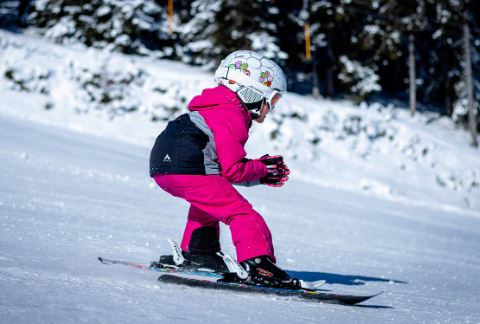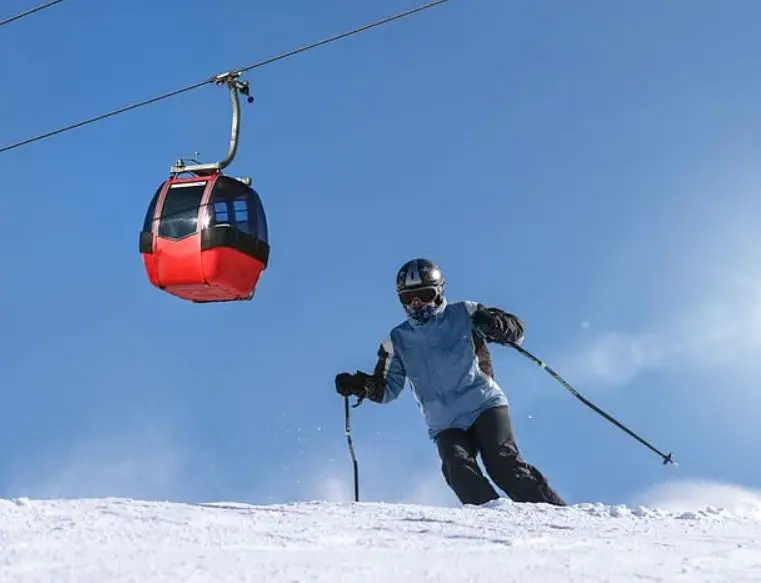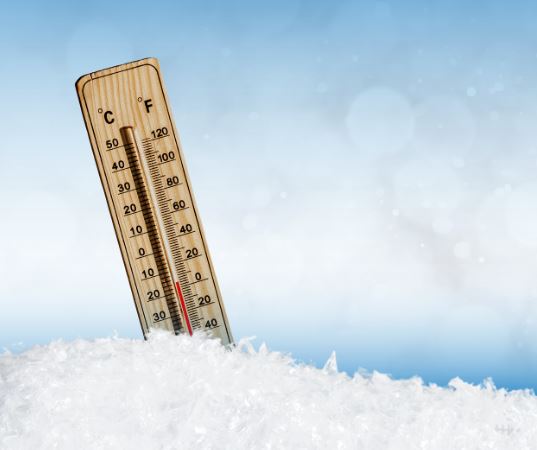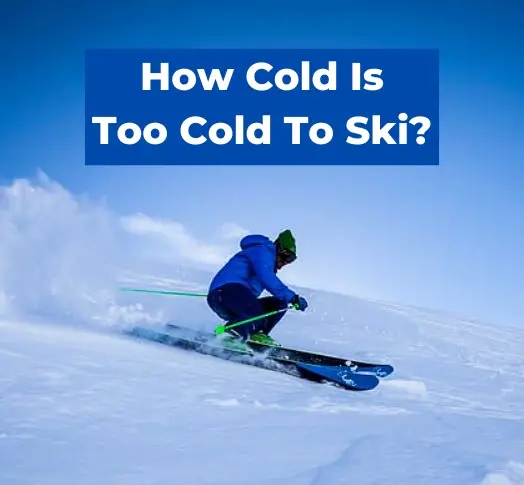When it comes to skiing, many people wonder: how cold is too cold to ski? While some may think that there is a specific temperature threshold that should not be crossed, the truth is that any temperature can be manageable as long as the skier is properly prepared and dressed for the conditions.
The ideal temperature range for skiing is between 14 and 32 degrees Fahrenheit, but this can vary depending on factors such as wind chill, humidity, and personal preference. It’s important to note that cold is relative, and what may feel too cold for one person may be perfectly fine for another.
While extremely cold temperatures can pose risks such as frostbite and hypothermia, these can be avoided by taking proper precautions such as wearing warm and waterproof clothing, taking breaks to warm up indoors, and staying hydrated. Ultimately, the decision of whether or not to ski in cold temperatures should be based on personal comfort levels and safety considerations.
The Importance of Proper Dressing

When it comes to skiing, it’s important to dress properly for the weather conditions. The temperature can vary greatly depending on the location and time of day, so it’s important to be prepared for all possibilities. The general rule of thumb is that there is no such thing as too cold to ski, as long as you are dressed properly.
One of the most important things to consider when dressing for skiing is layering. Wearing multiple layers allows you to adjust your clothing as needed throughout the day. A base layer made of moisture-wicking material will help keep you dry and warm. On top of that, a mid-layer made of fleece or wool will provide insulation. Finally, an outer layer made of waterproof and windproof material will protect you from the elements.
Another important aspect of proper dressing for skiing is to cover all exposed skin, including your face and hands. A warm hat, gloves, and a neck gaiter or scarf will help keep you warm and prevent frostbite. Ski goggles or sunglasses are also essential to protect your eyes from the sun and wind.
It’s also important to pay attention to the details when dressing for skiing. Look for features such as adjustable hoods, cuffs, and snow skirts to help keep the cold and snow out. Pockets with zippers or flaps can also be useful for storing small items like hand warmers or snacks.
Overall, dressing properly for skiing is crucial to ensure a safe and enjoyable experience on the slopes. By layering appropriately, covering all exposed skin, and paying attention to the details, skiers can enjoy even the coldest of temperatures.
Factors to Consider When Deciding to Ski in Cold Weather

Temperature Range
When it comes to skiing in cold weather, the temperature range can vary depending on a skier’s tolerance and the proper equipment. Generally, temperatures between 20 to 30 degrees Fahrenheit (-6.7 to -1.1 degrees Celsius) are considered ideal for skiing. However, some skiers may be able to handle temperatures as low as 0 degrees Fahrenheit (-17.8 degrees Celsius) with the right clothing and preparation.
It’s important to note that the temperature can vary depending on the location and time of day. Skiing in the morning may be colder than in the afternoon, and skiing at higher elevations may be colder than at lower elevations. Skiers should also be aware of any temperature changes that may occur throughout the day and adjust their clothing accordingly.
Wind Chill Factor
Another factor to consider when deciding to ski in cold weather is the wind chill factor. Even if the temperature is within the ideal range, strong winds can make it feel much colder and increase the risk of frostbite and hypothermia. Skiers should check the wind chill forecast and dress appropriately with wind-resistant clothing and accessories, such as a face mask or balaclava.
It’s also important to take breaks and warm up indoors periodically to prevent the body from losing too much heat. Skiers should be aware of any signs of hypothermia, such as shivering, confusion, or loss of coordination, and seek medical attention if necessary.
In summary, skiing in cold weather is possible as long as skiers are prepared and dressed properly. The ideal temperature range is between 20 to 30 degrees Fahrenheit (-6.7 to -1.1 degrees Celsius), but skiers can handle colder temperatures with the right clothing and preparation. Skiers should also be aware of the wind chill factor and take breaks to warm up indoors to prevent hypothermia.
Tips for Dressing Properly for Cold Weather Skiing

Layering
Layering is key to staying warm on the slopes. Start with a base layer made of moisture-wicking fabric to keep sweat away from the skin. Add a mid-layer made of insulating material like fleece or down to trap body heat. Wool turtle necks, fleeces or pullovers are great insulating layers to keep the body warm. One or two of these, depending on how cold it is and how much room there is under the coat, are key. A vest is a great extra insulation layer that keeps the core warm while being less restricting in the arms. Ski pants are also important to keep the legs warm and dry.
Protecting Extremities
Protecting the extremities is crucial in cold weather skiing. A warm hat or helmet liner is essential to keep the head warm. The head is a major source of heat loss, and many people assume a helmet provides adequate insulation. On really cold days, add a beanie or balaclava beneath it or a hood over it. Gloves or mittens are also important to keep the hands warm. Look for gloves with insulation and a waterproof exterior. Ski socks are also important to keep the feet warm and dry. Look for socks made of wool or synthetic materials that wick away moisture.
Choosing the Right Materials
Choosing the right materials is important for staying warm and dry on the slopes. Look for materials that are waterproof and breathable. Gore-Tex is a popular material for ski jackets and pants because it is both waterproof and breathable. Avoid cotton, as it absorbs moisture and can leave the body feeling damp and cold. Instead, look for synthetic materials that wick away moisture.
Tips For Skiing In Extreme Cold Weather
When it comes to skiing in extreme cold weather, preparation is key. With the right mindset and gear, anyone can enjoy skiing even in sub-zero temperatures. Here are some tips to help you stay warm and safe while skiing in extreme cold weather:
- Dress in layers: Layering is essential for keeping warm in cold weather. Start with a moisture-wicking base layer, followed by a warm mid-layer, and finish with a windproof and waterproof outer layer.
- Protect your extremities: Your hands, feet, and head are the most susceptible to frostbite. Wear insulated gloves or mittens, waterproof boots, and a warm hat or helmet liner to protect these areas. Heated ski socks and heated ski boots are a nice addition as well.
- Stay hydrated: It’s easy to forget to drink water when it’s cold outside, but staying hydrated is crucial for keeping your body warm. Bring a water bottle and take frequent sips throughout the day.
- Take breaks indoors: When the temperature drops too low, it’s important to take breaks indoors to warm up. Find a lodge or other heated area to take a break and warm up before heading back out on the slopes.
- Check weather conditions: Before heading out to ski, check the weather conditions and wind chill. If the temperature is too low or the wind chill is dangerous, it’s best to stay indoors.
- Have a warm start: avoid leaving your ski equipment in the car overnight. Starting with frozen boots, gloves, and cold ski pants on a below-zero day is not ideal.
- Eat a hot, healthy meal and drink warm drinks before you ski.
- Use the buddy system on frigid days: that way you can check eachother for frostbite or exposed skin and keep each other company.
- Check your bindings: make sure your bindings are functioning correctly, as super cold temps can freeze the toe and heel release.
- Park with your car pointed out, with a full tank of gas and a good battery: this will help your car to start in the coldest temperatures, plus parking facing out will make it easier to get a jump if needed.
By following these tips, skiers can safely enjoy skiing in extreme cold weather. Remember, with the right preparation and gear, any temperature can be comfortable for skiing.

